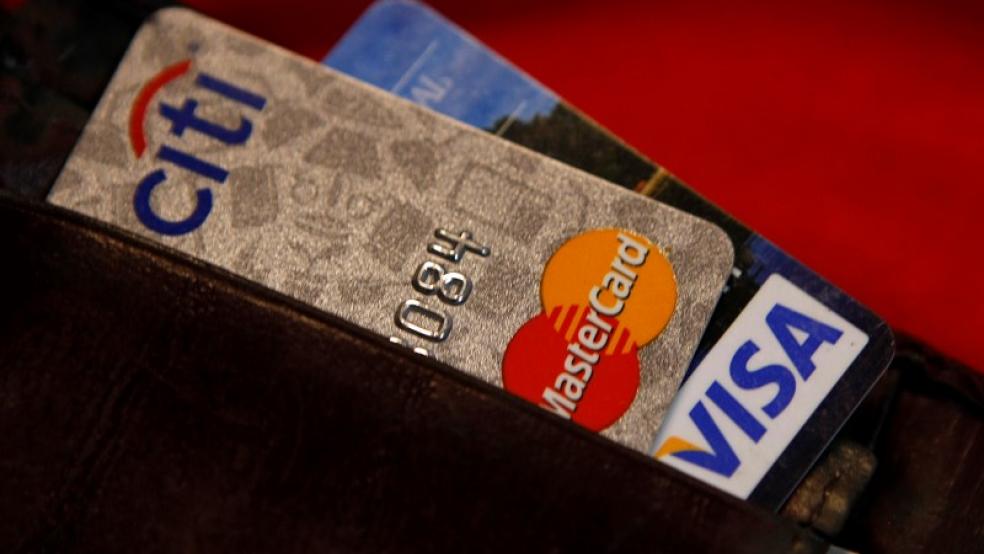Credit cards are a relatively secure and convenient way to make purchases, and they can be a great way to earn free trips or other rewards.
As the economy improves, more consumers are reaching for plastic. The number of credit hard holders grew by 10 million in the second quarter to 133 million, according to a recent TransUnion report. Credit cards come in many flavors, however, and if you don’t have a card that matches up with your credit profile and spending habits, you could be missing out on rewards or overpaying in fees and interest.
Related: Here’s How Investment Fees Can Steal Your Retirement
Unfortunately, many Americans are in that boat. More than 20 percent of consumers have a card with fees or rewards that aren’t aligned with their habits, according to a recent report by J.D. Power. “Most people respond to the first card offer they get in college or right after, and then they just stick with it because they assume that all cards are about the same, but that’s a false assumption,” says Curtis Arnold, editor-in-chief of CardRatings.com.
Even if you’re happy with your current card, competition for customers is so fierce right now that you might be able to score some serious reward offers for switching. It’s worth at least checking with your current issuer to see whether they can offer your more compelling terms to stay with them. If you think you may be able to do better than your current card or if you’re considering a new card already, read on to see how to find a good fit.
Are the annual fees worth it?
Many credit cards offer a fee-free introductory period, but many rewards cards do carry an annual fee once that initial period ends. If you’re maximizing your rewards, that could make the fee worth it, but many consumers aren’t taking full advantage. Airline co-branded cards, for example, usually charge an annual fee of at least $75. That means consumers would need to spend at least $500 per month on the card (the typical amount needed to earn enough rewards to offset the average annual fee), according to J.D. Power.
Related: Why Chip Credit Cards Have Been Such a Flop
“Anyone who doesn’t use their card often should have a card without an annual fee,” says Gerri Detweiler, head of market education for Nav, a website that helps entrepreneurs build and manage their business and personal credit profiles. “But if you’re spending a lot of money on your card each month, the reward might be worth it.”
If you carry a balance on the card, you’re better off looking for a card that offers lower interest than one that offers better rewards.
Pro tip: Ask your issuer whether they’ll waive the annual fee or see whether you can use reward points to pay for it.
Do you use the rewards?
If you use a rewards card and don’t redeem the rewards, you’re essentially leaving money on the table, and you could be paying an annual fee for a service that you’re not even using. “A big chunk of the rewards that are accumulated never get cashed in, and the issuers know that,” Arnold says.
Related: How to Earn an Extra $150 With Your Credit Card
While the value of reward bonuses has fallen slightly from last year, they’re still more than twice as valuable as they were in 2010, according to CardHub. Look for a rewards program that is user-friendly and encourages redemptions, or a simple cash-back card that credits your statement with the rebates you earn via purchases.
Pro tip: Don’t’ forget about the potentially valuable rewards your card may offer beyond points and cash back on purchases. Many cards offer members benefits like extended warranties, price-matching guarantees and roadside assistance, all of which can be valuable. Since these benefits come from the card networks, like Visa and American Express, and not the issuing banks, they’re not as widely marketed to consumers.
Is the interest rate competitive?
If you’re carrying a balance on your credit card, you should focus on paying that down before considering rewards that would incur more debt. That said, the average household has more than $15,000 in credit card debt, according to NerdWallet. If you’re paying high interest on credit card purchases — the average rate in 14.6 percent — you can probably find a card that offers a better rate.
Related: The Best Things to Charge on Your Credit Card
Pro tip: Many issuers offer balance-transfer offers with a 0 percent introductory interest rate. If you think you can pay off the balance before the introductory period expires, it may be smart to switch. Keep in mind that balance transfer offers also often come with an initiation fee, typically either 3 percent of the balance or $5 to $10, whichever is greater.
Do you qualify for the best offers?
One reason consumers pay high interest rates or have cards with meager rewards programs is that they don’t qualify for better offers. Boosting your credit score will make the banks compete for your business, which means you’ll have access to the best rates and rewards programs.
Pro tip: Check your credit reports for free every year at annualcreditreport.com. Checking your report will not only give you insight into which areas of your credit you may need to improve, but it will also ensure that any newly introduced errors get quickly corrected. “Once you know your score,” says Beverly Harzog, a credit card expert and author of The Debt Escape Plan, “you can narrow down your search for a new card.”





